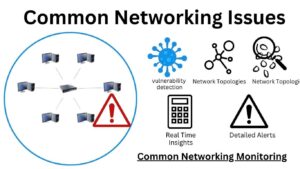At Technical Sourav, we understand the frustration and inconvenience that network issues can cause. Whether you’re a company owner, an IT professional, or a casual internet user, network issues can disturb your everyday activities and impede productivity.
That is why we have created this detailed guide to assist you in rapidly troubleshooting and resolving common network issues.
Some Common Network Issues
Here are some common networking issues that may impact your networking experience.
Slow Internet Speeds
Slow internet connections may be a huge impediment when attempting to do work online. Here are some troubleshooting procedures to fix this issue.:
Check Your Internet Connection
Begin by making sure the device is properly connected to the internet. If you’re utilising a wireless connection, make sure all wires are properly plugged in and that your Wi-Fi signal is strong.
Restart Your Router and Modem
Sometimes, network issues can be resolved by simply restarting your router and modem. Turn them off, then wait a few seconds before turning them back on. This can help clear any temporary glitches that may be affecting your connection.
Update Firmware and Drivers
Outdated firmware or drivers on your router or device can contribute to slow internet speeds. Check the manufacturer’s website for any available updates, and make sure you’re running the most recent version.
Limit Bandwidth Usage
If you have several devices connected to your network, or if someone is streaming or downloading huge files, your internet speeds may suffer. Consider limiting bandwidth-heavy activities or optimizing your network settings to prioritize essential tasks.
Intermittent Connectivity
Intermittent connectivity troubles may be aggravating, especially if you’re in the middle of a video conference or attempting to make an online transaction. Follow these steps to resolve such problems:
Check for Local Network Interference
Check that no physical impediments, such as walls or furniture, are blocking your Wi-Fi connection. Additionally, keep electronic devices that may cause interference, like cordless phones or microwaves, away from your router.
Update Router Firmware
Just like with slow internet speeds, updating your router’s firmware can help address intermittent connectivity issues. Check the manufacturer’s website for firmware upgrades and follow the installation instructions.
Use Wired Connection
Connect your device to the router directly, if feasible, using an Ethernet connection. Wired connections tend to be more stable and can eliminate Wi-Fi-related connectivity problems.
Contact Your Internet Service Provider (ISP)
If the aforementioned methods do not address the problem, you should contact your ISP. They can perform diagnostics on their end, identify any potential network problems, and provide guidance or necessary repairs.
Limited Wi-Fi Range
A limited Wi-Fi range can be an obstacle in larger homes or offices. To extend the range and improve coverage, consider the following options:
Reposition Your Router
Place your router in a central location to ensure maximum coverage. Keep it away from obstructions and elevate it if possible. Experiment with different placements to find the optimal position that offers the best signal strength throughout your space.
Use Wi-Fi Extenders or Mesh Systems
Wi-Fi extenders and mesh systems are excellent solutions to expand coverage. Extenders receive and amplify your existing Wi-Fi signal, while mesh systems use multiple access points to create a seamless network. Evaluate and select the finest choice for your requirements.
Upgrade to a Higher-Quality Router
Sometimes, the limitations may stem from an outdated or low-quality router. Upgrading to a modern, high-quality router with better range capabilities can significantly improve your Wi-Fi coverage.
Network Security Concerns
Network security is critical for safeguarding your data and protecting against any attacks. Here are some essential tips to enhance your network security:
Enable WPA2/WPA3 Encryption
Check to see if your router is utilising the most recent encryption protocols, such as WPA2 or WPA3. These protocols provide stronger security measures and help prevent unauthorized access to your network.
Change Default Router Password
Many routers come with default login credentials, which are well-known to hackers. Change the default password to a strong, unique one to secure your network from potential unauthorized access.
Update Firmware Regularly
Regularly updating your router’s firmware is crucial as it includes security patches and bug fixes. Check the manufacturer’s website periodically for firmware updates and keep your router up to date.
Install Antivirus and Firewall Software
Protect your devices by installing reliable antivirus and firewall software. These security tools can detect and prevent malicious activities that may compromise your network.
By following these troubleshooting tips and implementing the appropriate solutions, you can overcome common network issues efficiently and ensure smooth and uninterrupted connectivity.


